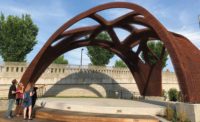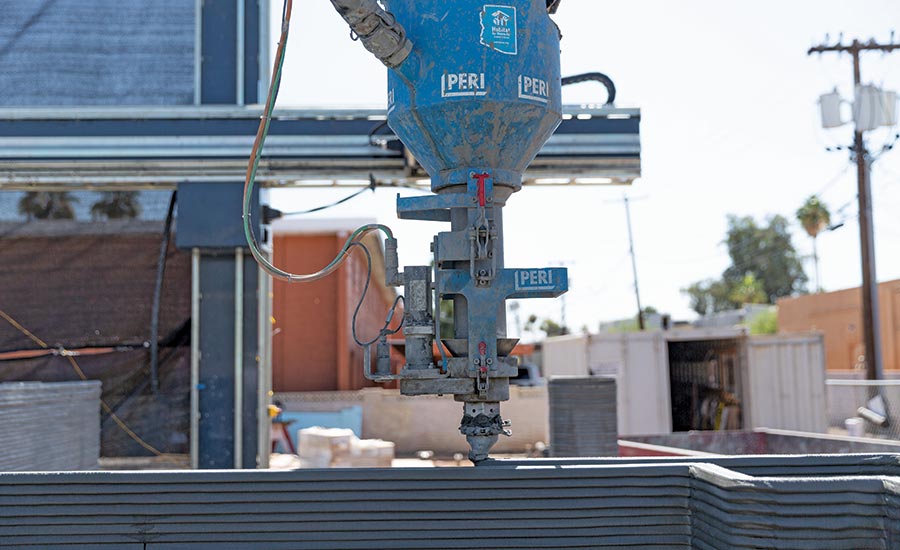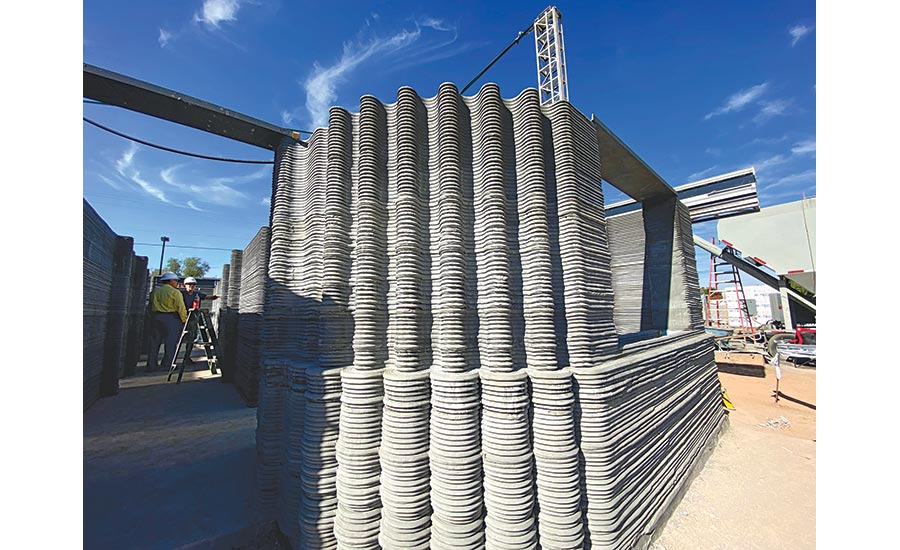House Made of 3D-Printed Concrete Goes Up in Arizona

The Tempe home’s walls were built on site using PERI’s gantry-mounted 3D printer.
Photo courtesy of PERI

The 3D-printed walls of the home are capable of holding static and dynamic loads.
Photo courtesy of PERI


A print nozzle sweeps back and forth around a small plot in Tempe, Ariz., and the walls of a single-family home begin to take shape. Two technicians keep an eye on the gantry-mounted 3D concrete printer and a small group of Habitat for Humanity volunteers are on hand to pitch in as needed, but the nozzle just goes, building the home layer by layer. After the walls are printed, construction of the house will be completed by traditional means and the home will eventually go to a family selected by Habitat for Humanity Central Arizona.
“Normally, Habitat would have 20 or so volunteers out framing a house, now we have a few volunteers who help us clean the site in the morning,” says Samuel Hager, application engineer with PERI USA and project lead for the Tempe 3D-printed home. “Once the printer is up and running, they just sit in the shade and watch it print.”
The 2,433-sq-ft home is comprised of 70% to 80% 3D-printed concrete, including all interior and exterior walls and portions of the attached garage. It’s the first project in the U.S. to use PERI’s 3D printing system. The BOD2 printer, manufactured by COBOD, is able to move freely along three axes and can travel at up to 1 m per second.
The concrete being used is a specially designed 3D-printing mix from Laticrete, but Hager says the printer can work with a range of concrete types, as long as aggregate sizes are below 8 mm. “For the Tempe project, the foundation slab is three times less strong in compression than what we are printing with,” he says. “The walls are incredibly strong, with strong vertical compression load strength, and they’ll handle wind loads just fine.” There is no specific building code that addresses 3D-printed concrete buildings, but PERI worked with the city of Tempe and the state of Arizona on the permitting process for the house. The home does have several non-3D-printed columns to support the roof, in order to meet existing code language. But PERI already has built several 3D-printed buildings in Germany where static loads are carried entirely by 3D-printed concrete walls.
The design of the three-bedroom home is based on a typical one-story, ranch-style home common in Arizona, but Hager says the freedom of movement of the printer and structural properties of 3D-printed concrete allow for all sorts of previously difficult or expensive design features. “This house will not look too different from one down the block, but in the future, architects can play around with the design a bit.” The 3D-printed concrete can handle overhangs and can easily be programmed to print out curved, tilted or complexly textured walls that normally would require a lot of custom formwork to cast on site.
For this home, the wall-print design does include channels for conduit and spaces for electrical outlets. The kitchen’s counters and island were also 3D printed, just a sample of how detailed the preprogrammed design can get, Hager says.
Operating the printer also is meant to be accessible to workers. With one technician to monitor extrusion rates on a laptop or tablet and another to make sure the concrete is mixing properly, labor requirements are minimal compared to typical stick-built construction. And new workers can be trained to run the printer in a matter of days, Hager adds.
The speed and competitive cost of the 3D-printed home could be a big deal for Habitat for Humanity, according to Jason Barlow, CEO of Habitat Central Arizona. “If we can deliver decent, affordable, more energy-efficient homes at less cost, in less time and with less waste, we think that could be a real game-changer. Just think of the implications,” he says.






